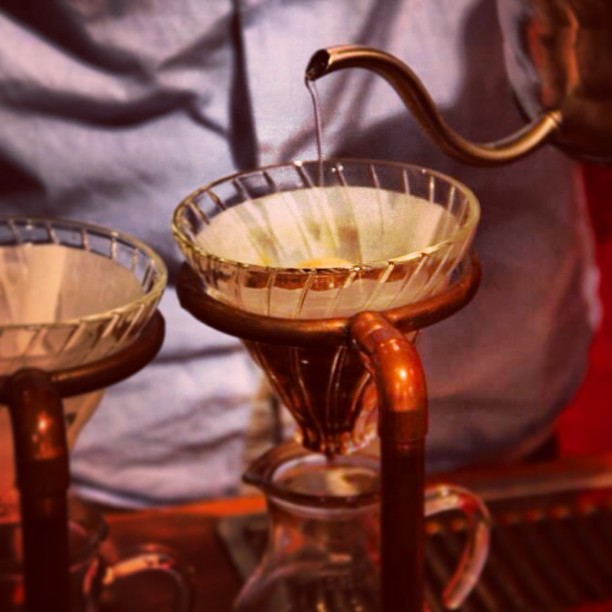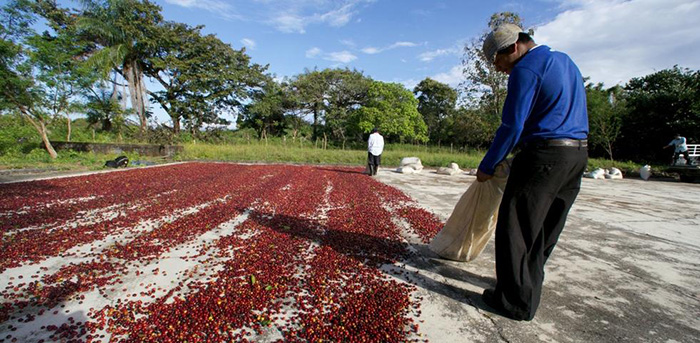How to better describe and taste the flavor of coffee
Flavor [Flavor]
It is the overall impression of aroma, acidity, and alcohol. It can be used to describe the overall feeling of coffee.
Acidity
It is all the sour and strong characteristics of coffee grown in the plateau. The sour acrid is different from bitter or sour, and it has nothing to do with pH value, but it is a fresh and lively quality that promotes coffee to exert functions such as boosting the mind and cleansing the taste.
Body [Alcohol]
Is the conditioning of coffee after drinking, in the tongue to coffee leaves some taste. Alcohol varies from light to light, medium, high, fatty, and even syrupy in some Indonesian coffees.
Aroma [smell]
Aroma refers to the aroma and aroma emitted by coffee after conditioning. Bouquet is a less commonly used word for the taste of ground coffee. Aroma is usually specific and comprehensive. Words used to describe Aroma include: caramel, charred, chocolate, fruity, grassy, malty, rich, rich, spicy, etc.
Bitter
Bitterness is a basic taste, and the sensory area is distributed in the root of the tongue. The bitterness of dark roasts is deliberately created, but the most common cause of bitterness is too much coffee powder and too little water. Bitterness is not the assent word for sour.
Bland [Light]
Coffee grown in lowlands and usually quite light and tasteless. Coffee with too little powder and too much water will also have the same light effect.
Briny
Coffee brewed, if overheated, will produce a salty taste. Some coffee shops have coffee that tastes like this.
Earthy
Usually used to describe spicy and earthy Indonesian coffee. But these references to mud do not refer to coffee beans stained with mud taste. Some commercial coffees are mixed with cheap coffee, and the muddy taste may turn dirty, apparently because of the drying and rough processing techniques used to spread the beans on the ground.
Exotic
Coffee has a unique aroma and special smell, such as flowers, fruits, spices like sweet characteristics. Coffee grown in East Africa and Indonesia usually has this characteristic.
Mellow [Aromatic Alcohol]
Coffee is an adjective used to describe coffee with low to medium acidity and good balance.
Mild
It indicates that a coffee has a harmonious and delicate flavor. Highland latin american coffee usually described as mild. It is also a term used in coffee circles to refer to all highland coffee except Brazil.
Soft
A coffee with low acidity, such as Indonesian coffee. It can also be described as aromatic or sweet.
Sour
A taste zone located primarily on the back of the tongue and characteristic of light roasted coffee.
Spicy [Spicy]
A flavor or smell reminiscent of a particular spice. A type of highland coffee (especially aged coffee) produced in Indonesia, with a sweet cardamom smell.
Strong
Technically, it describes the number of advantages and disadvantages of various tastes, or the relative proportion of coffee and water in a particular conditioning product. In colloquial usage, intense describes the intense flavor of dark roast coffee. In addition, it misleads people into the illusion that it contains a lot of caffeine. In fact, canned light coffee is high in caffeine because it contains more decaf coffee.
Sweet [Sweet]
A commonly used adjective, almost fruity in nature and related to alcohol. Coffee grown in the highlands of Costa Rica usually has a strong flavor.
Wild
Coffee has extreme taste characteristics. If ordinary people could not accept it, they would call it odd, but it could also be an attractive feature, depending on personal preferences.
Winy
Describe an attractive flavor reminiscent of wine. Fruity acidity and smooth body, creating a special flavor contrast.

Source:
Blog of Fujian Damei Coffee
Important Notice :
前街咖啡 FrontStreet Coffee has moved to new addredd:
FrontStreet Coffee Address: 315,Donghua East Road,GuangZhou
Tel:020 38364473
- Prev

The treatment of raw coffee beans: a detailed introduction to the sunburn method
The solarization process can also be called a natural process, which is basically the oldest, simplest, and requires the least mechanical tools. The first step is to sort and clean it up first. Immature, overripe, damaged coffee fruits will be singled out first. At the same time, the branches, leaves, mud and stones mixed in the fruit will also be removed. Sieves are usually used to deal with this preliminary
- Next

Introduction to Coffee for beginners: an explanation of some words in Coffee
Caramelization tester: this is the baking degree index used in the United States. The baking degree is expressed from the shallowest 100 to the deepest 25, meaning (the baking degree is about Agtron50). The determination relies on a special chromatic aberration judgment called Agtron M-Basic. Arabica species: together with Robsta species and Leiberia species, they are called the three primary species of coffee. The original farming is the cloak.
Related
- What is the meaning of lactic acid fermentation with coffee bean treatment?
- How to judge the state of foam by sound?
- How does the latte pull out the unicorn pattern? Come to get for a little trick to improve the flower pull!
- Will flower pulling affect the taste of the latte?
- Do you know the history of coffee?
- The difference between honey treatment and sun washing what is raisin honey treatment?
- What kind of milk can a novice use to make coffee foam to keep the foam longer? The correct method and skills of milking tutorial sharing
- Why do washed coffee beans taste sour? Flavor characteristics of washed Coffee
- Introduction to the skill of how to practice the size and height of water injection around the circle of hand-brewed coffee
- How do beginners practice coffee flower drawing from scratch?

